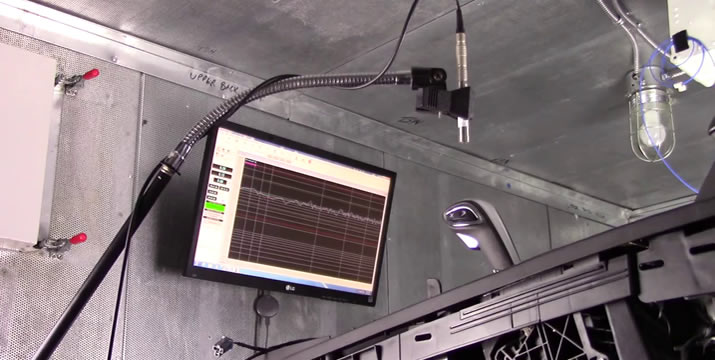How do I conduct a BSR test?

A BSR (buzz, squeak and rattle) test is deceptively simple to perform. All you need to do is shake the object that you’re interested in evaluating and listen for any noise that emanates from the object. For smaller light objects that’s what an engineer can actually do to get a sense of whether there are any really noticeable BSR issues present.
But performing a accredited buzz, squeak and rattle test is a bit more complicated. In addition to the device that you are going to test, you’ll need a fixture to attach the device to a shaker, a shaker capable of vibrating the combined fixture/device package with the required energy and frequency distribution, an environment which is quiet enough not to mask the noise produced by the device plus a microphone and data acquisition/sound quality analysis system.
Once you’ve got all of these things together, the device is usually vibrated with the necessary profile for a short period of time while the sound acquisition system logs a few seconds of data from the microphone. The data is then analysed to define the necessary sound metric required by the test specification.
What should I look for in BSR test results?
Many BSR specifications still require a simple maximum A-weighted sound pressure measurement for the duration of the test. Most modern BSR specifications require the Zwicker loudness also known as N10 loudness to be reported. You are looking for a result which is lower than the maximum defined in the specification. Read Trends in Vehicle NVH Testing
When is the right time to conduct a BSR test?
The BSR phenomenon occurs when you have friction between incompatible material pairs moving in relation to each other. So, as soon as you have an assembly which is close enough to your production assembly as far as materials clearances/interferences are concerned a first BSR test be considered. The later in the development process this test is left, the more difficult it can be to mitigate BSR issues.
Tips for choosing a BSR test lab
- Look for a noise testing lab that is ISO 17025 accredited for the method that you need to perform.
- Ask the test engineer if the quiet shaker is time limited during operation at low noise levels. If it is time limited this will make it more difficult for you to troubleshoot any BSR issues which may be identified during testing.
- Ask the test engineer if they can design and build the vibration fixture. Unless you are experienced in the specialized design requirements required to meet both the resonant and maximum noise levels required of BSR fixturing, the BSR testing may be affected by the performance of the fixture. Having the fixturing designed, fabricated and qualified by the same facility that is scheduling your BSR test, provides you with better cost and schedule certainty.
- Finally, ask the test engineer if the shaker and acquisition/analysis software are approved by the OEM who is requesting the BSR test.
